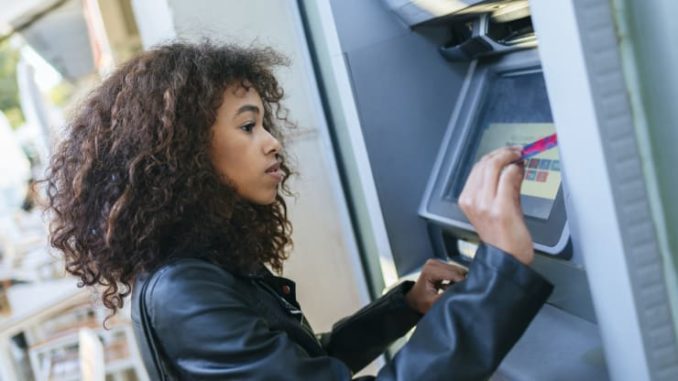
Get ready to pay more to retrieve your cash at an ATM.
That’s because customers who withdraw money outside of their bank’s network are now paying an average fee of $4.72 — a record high, according to an analysis by Bankrate.com.
That’s up 33% over the last decade.
The personal finance website studied 10 banks and thrifts in each of 25 U.S. metro areas in July, examining interest and non-interest-bearing accounts, as well as debit and ATM fees.

WATCH NOWVIDEO01:47Five painless things you can do to rein in your spending
This fee includes the cost banks charge noncustomers for using their ATMs — which is now an average of $3.09.
Meanwhile, banks are assessing their account holders an average penalty of $1.63 for withdrawing money from a different ATM.
“The main point is that these fees keep going up, but they’re avoidable,” said Greg McBride, chief financial analyst at Bankrate.com. “It’s just like health insurance: If you go outside of the network, it’s going to cost you.”
Here’s how ATM fees are looking across the country and where your city stands.
Cities with the highest fees

Banking customers in Houston are paying the highest average fees for using out-of-network ATMs: $5.58. Los Angeles is home to the lowest fees, sitting at an average of $4.15, Bankrate.com found.
Large banks don’t face any pressure to compete on these fees. Their market share is so large, they have no real incentive to reduce their costs.
The opposite is true for smaller institutions.
“In areas where the market share isn’t as concentrated, there’s a greater disparity in fees, which can serve to bring down the overall average,” said McBride.
Dodge extra costs

Photo by Vadym Petrochenko via Getty Images
It’s frustrating to pay a fee to use your own money. However, there are a few ways to avoid those costs.
Here are a few things to consider.
Ask about the different checking accounts available at your bank. “A lot of people don’t realize you can switch to a different checking account at the same bank,” said McBride.
More than 4 out of 10 banks offer a noninterest checking account that’s totally free, he said. About the same number of institutions charge an ATM fee, but will waive it if you sign up for direct deposit.
Consider smaller banks and credit unions. These institutions belong to nationwide fee-free alliances, meaning you can use an ATM and do so for free. Small banks are also more likely to compete with one another on fees, so you might find a better deal.
Use your bank’s mobile capabilities. If you’re in a cash crunch while you’re out, use your bank’s app or look up its website to find the nearest in-network ATM.
Worst-case scenario: Go to a shop. Many stores allow you to get cash back at the register when you use your debit card. “Many merchants don’t charge for that, so it’s the equivalent of a free withdrawal,” said McBride.
More from Personal Finance:
Your weekly splurges are costing you $7,400 annually
1 in 4 millennials are keeping money secrets from their partner
Kids are earning $1,500 a year in allowance. How to save it
BY CNBC NEWS
